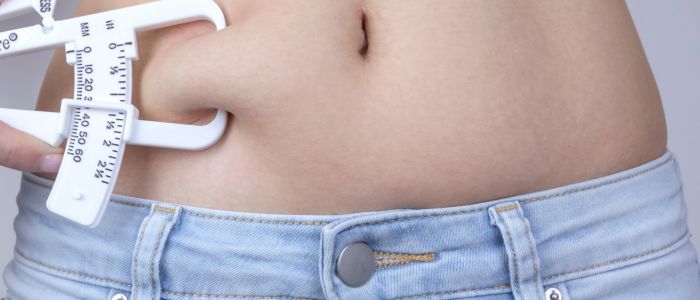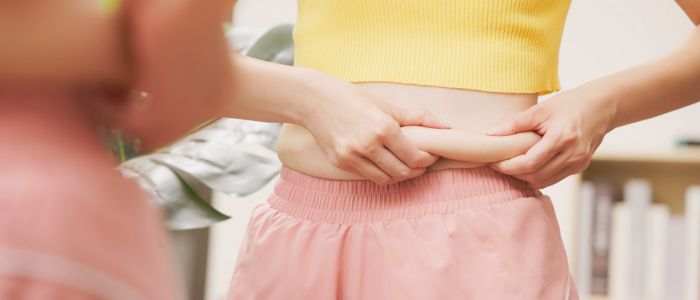
Table of Contents
- How to Choose the Right Fat Reduction Techniques
- More about Body Fat
- Types of Fat: Subcutaneous vs. Visceral Fat
- How and Why Fat Accumulates
- Solutions to Get Rid of Excess Fat
- Traditional Methods: Diet and Exercise
- Medical and Surgical Options
- Lifestyle Adjustments
- Liposuction to Get Rid of Excess Fat
- Benefits of Liposuction
- Who is a Good Candidate?
- The Procedure
- Comparing Liposuction with Other Solutions for Fat Reduction
- Liposuction vs. CoolSculpting
- Liposuction vs. Laser Treatments
- Liposuction vs. Diet and Exercise
- FAQs about Treatment and Solutions for Excess Fat
- Further Reading about Procedures at Cheshire Cosmetic Surgery
How to Choose the Right Fat Reduction Techniques
Excess body fat can be a source of distress for many people. Despite best efforts through diet and exercise, certain areas of fat can remain stubbornly resistant to change. This can lead to frustration for those who are striving for a more sculpted and healthier physique. And this is why so many people resort to liposuction — one of the most popular and effective treatments available for targeted fat removal. This surgical solution offers a contouring option that diet and exercise alone may not achieve, providing relief and results to those struggling with unwanted fat deposits.
The purpose of this blog by Consultant Plastic Surgeon Anca Breahna is to explore treatments and solutions for excess fat, including liposuction with its benefits and considerations.
More about Body Fat
Body fat, commonly referred to as adipose tissue, is a key component of the human body with several crucial functions beyond the common perception of it merely being an unwanted cushion or a calorie depot.
Adipose tissue, or body fat, is made up of cells called adipocytes that store energy in the form of fat. This tissue serves multiple important physiological roles. Primarily, it acts as an energy reserve, releasing fatty acids into the bloodstream when the body requires additional fuel. Moreover, adipose tissue provides insulation and cushioning for internal organs, aiding in the maintenance of body temperature and protecting bodily structures from mechanical damage.
Beyond its physical functions, adipose tissue is important for metabolic and hormonal health. It secretes various hormones like leptin, which regulates hunger and energy balance, and adiponectin, which plays a role in the modulation of glucose levels and fatty acid breakdown. These hormonal functions make adipose tissue a vital player in metabolic syndromes such as diabetes and obesity.
Types of Fat: Subcutaneous vs. Visceral Fat
Adipose tissue can broadly be categorised into two types: subcutaneous fat and visceral fat, each having distinct locations and functions within the body.
- Subcutaneous Fat: This type of fat lies directly under the skin and is the fat most commonly associated with aesthetic concerns. It serves as the body’s primary insulation and energy reserve. Because it is located close to the skin’s surface, subcutaneous fat is the primary target during liposuction procedures.
- Visceral Fat: Conversely, visceral fat is stored deep within the abdominal cavity, surrounding organs such as the liver, pancreas, and intestines. Visceral fat is metabolically active and linked to a higher risk of serious health conditions, including heart disease, diabetes, and certain cancers. It is not accessible through liposuction due to its location and the vital organs it envelops.
How and Why Fat Accumulates
Understanding why fat accumulates in particular areas and why some fat is stubborn against diet and exercise is essential for anyone considering liposuction. Several factors influence fat accumulation:
Genetic Factors
Genetics play a role in how body fat is distributed. This genetic predisposition is why some individuals may struggle more to lose fat in certain areas—commonly referred to as “problem areas”—which can be significantly different between different people. Genetic influences can dictate not only the quantity of fat cells in various regions but also how easily these cells store fat.
Lifestyle Factors
Diet and physical activity directly influence body fat composition. High-calorie diets and sedentary lifestyles contribute to increased fat storage as the body converts excess calories into fat for long-term storage. Conversely, regular physical activity and a balanced diet can help minimise fat accumulation by increasing the rate at which the body burns calories and fat.
Hormonal Factors
Hormones significantly affect fat storage; for instance, elevated cortisol levels associated with stress can lead to an increase in abdominal fat. Similarly, changes in oestrogen and testosterone levels as people age can change fat distribution, increasing the propensity to store visceral fat.
Common Areas of Fat Accumulation
Certain areas of the body, like the abdomen, thighs, and hips, are notorious for their tendency to harbour stubborn fat. This persistence is partly due to the higher concentration of alpha-adrenergic receptors in fat cells from these areas—receptors that inhibit the breakdown of fat. Therefore, these areas do not respond as readily to typical weight loss efforts such as diet and exercise.
- Abdomen: The belly tends to accumulate visceral fat, especially in men, which is why it can be particularly challenging to slim down through lifestyle changes alone.
- Thighs and Hips: Women, in particular, may find it difficult to lose fat in these areas due to higher oestrogen levels that promote fat storage in the lower body for reproductive purposes.
Being aware of these aspects of body fat is important for anyone considering liposuction as it provides a clearer picture of what the procedure can and cannot achieve.
Solutions to Get Rid of Excess Fat
While diet and exercise are the go-to methods for fat reduction, certain stubborn areas may not respond as well to these traditional methods. Next, we will discuss a range of solutions that can aid in fat reduction, highlighting their benefits and limitations, and where liposuction fits into the spectrum of available treatments.
Traditional Methods: Diet and Exercise
The foundation of any fat reduction effort involves a healthy diet and regular physical activity. Diet modifications often include reducing caloric intake and opting for a balanced diet rich in nutrients, which can help decrease body fat levels.
- Diet: Eating smaller portions and foods low in fat and sugars but high in fibre—such as fruits, vegetables, and whole grains—can significantly affect overall body fat. Keeping a food diary or using an app can help maintain awareness of calorie intake.
- Exercise: Regular physical activity, especially cardio exercises like running, cycling, and swimming, can help burn calories and reduce fat. Strength training is also important as it builds muscle mass, which naturally boosts metabolism, thereby increasing the rate at which the body burns calories and fat.
Medical and Surgical Options
When diet and exercise aren’t enough, medical and surgical interventions may be considered. These options range from minimally invasive procedures to more extensive surgeries like liposuction.
- Liposuction: This surgical procedure is specifically designed to remove fat from desired areas, providing an immediate reduction in fat cells. Liposuction is particularly effective for contouring under the chin, on the abdomen, thighs, and hips, but it is not suitable for total body weight loss.
- CoolSculpting: Another method, known as cryolipolysis, involves freezing fat cells which the body then naturally eliminates over time. This non-surgical option is best for small fat deposits.
- Laser Treatments: Procedures like SculpSure use targeted laser energy to break down fat cells, which are then absorbed and removed by the body. This method is non-invasive and does not require downtime.
Lifestyle Adjustments
Besides diet and exercise, making broad lifestyle changes can also help manage and reduce body fat. These include:
- Sleep: Ensuring enough sleep each night can help regulate hormones that manage appetite and fat storage.
- Stress Management: Reducing stress through techniques like yoga, meditation, or mindfulness can decrease levels of cortisol, a hormone that contributes to belly fat.
Liposuction to Get Rid of Excess Fat
Liposuction stands out as a highly effective solution for removing excess fat, particularly in areas that do not respond well to diet and exercise alone. This surgical procedure is designed to reshape specific areas of the body, improving body contours and proportion by removing unwanted fat deposits.
Liposuction is a cosmetic surgery that involves the removal of fat from various parts of the body using a hollow instrument known as a cannula. This cannula is inserted under the skin, and a powerful vacuum is applied to suction out the fat. The procedure is not a weight-loss solution but rather a way to remove stubborn fat that has not responded to traditional weight loss methods.
Benefits of Liposuction
One of the primary advantages of liposuction is its ability to target specific areas for fat removal, offering results that diet and exercise can’t achieve alone. Common areas treated include the abdomen, hips, thighs, buttocks, arms, and neck. The benefits of liposuction include:
- Precision in Contouring: Liposuction can precisely remove pockets of fat from targeted areas, helping to enhance the body’s natural figure.
- Improved Body Proportions: By removing fat from specific areas, liposuction can significantly improve body symmetry and proportions.
- Boost in Self-Esteem: The cosmetic improvements achieved with liposuction can lead to enhanced self-confidence and a better overall body image.
Who is a Good Candidate?
Ideal candidates for liposuction are people who are near their ideal weight but have localised fat deposits that they would like to eliminate. Candidates should be non-smokers, in good general health, and have realistic expectations about the procedure’s outcomes. It is also crucial for patients to maintain a stable weight before and after the procedure to preserve the surgical results.
The Procedure
Liposuction is usually performed under general anaesthesia or local anaesthesia depending on the extent of the surgery. The procedure might last from one to several hours. Here’s a brief overview:
- Preparation: The areas to be treated are marked and photographed before surgery.
- Anaesthesia: Medication for comfort is administered, including a choice between local anaesthesia, intravenous sedation, and general anaesthesia.
- The Suction Process: A small incision is made, and the cannula is inserted to loosen excess fat using a controlled back and forth motion. The dislodged fat is then suctioned out of the body using a surgical vacuum or syringe attached to the cannula.
Comparing Liposuction with Other Solutions for Fat Reduction
Various treatments offer solutions depending on your needs, the amount of fat to be reduced, and the desired speed and permanence of results. Liposuction is one of the most direct and effective methods for removing fat, but how does it compare with other popular treatments like CoolSculpting, laser treatments, and traditional methods such as diet and exercise?
Liposuction vs. CoolSculpting
- Liposuction is a surgical procedure that involves physically removing fat from the body using a suction technique. It allows for the immediate removal of significant amounts of fat and can be targeted very precisely, which is why it’s particularly effective for contouring specific body parts. The results are typically dramatic and noticeable once the swelling subsides.
- CoolSculpting, on the other hand, is a non-invasive procedure based on the principle of cryolipolysis. It involves freezing fat cells to the point of death, after which they are naturally processed and eliminated by the body over time. The process is entirely non-surgical, which means there is no downtime required. Results from CoolSculpting are less immediate and less dramatic than liposuction, typically appearing over several months as the body clears the dead cells.
Liposuction vs. Laser Treatments
- Laser treatments, such as SculpSure, use heat from laser energy to destroy fat cells. Like CoolSculpting, this is a non-invasive method that requires no cuts or anaesthesia, and you can return to daily activities immediately after treatment. Results are gradual and less dramatic compared to liposuction.
- Liposuction offers more controlled and immediate results compared to laser treatments. It is particularly beneficial for patients seeking noticeable, targeted reductions in body fat that laser treatments may not adequately achieve.
Liposuction vs. Diet and Exercise
- Diet and exercise are the most natural ways to reduce fat and are essential for maintaining overall health and wellness. These methods help reduce visceral fat (the fat surrounding organs), which is linked to chronic diseases such as type 2 diabetes and heart disease. However, they may not effectively target subcutaneous fat (the fat under the skin) that contributes to body contouring.
- Liposuction does not replace diet and exercise but complements them by targeting specific areas of stubborn fat that do not respond well to lifestyle changes. It is ideal for sculpting the body rather than achieving significant weight loss.
FAQs about Treatment and Solutions for Excess Fat

How long do the results of liposuction last?
The results of liposuction can be long-lasting, provided you maintain a stable weight. The fat cells are permanently removed during the procedure; however, it is possible to gain weight in other areas of your body. To ensure the best possible results over time, it is important to adhere to a healthy lifestyle that includes a balanced diet and regular exercise.
Can liposuction or CoolSculpting help me lose weight?
Liposuction and CoolSculpting are fat reduction procedures, not weight-loss solutions. They are best suited for removing localised fat deposits and contouring the body, rather than reducing overall body weight. For significant weight loss, lifestyle changes such as dieting and exercising are recommended.
Are there any non-surgical alternatives to liposuction that offer immediate results?
Most non-surgical treatments, including CoolSculpting and laser fat reduction methods like SculpSure, do not provide immediate results. These treatments require time for the body to eliminate the destroyed fat cells, typically several weeks to months. For quicker, more visible results, surgical options like liposuction might be more appropriate.
How do I choose between different fat reduction treatments?
Choosing the right fat reduction treatment depends on several factors, including your health, the amount of fat you wish to remove, your body goals, and your tolerance for downtime or potential risks. Consultations with Anca can provide personalised advice and help you make a decision based on your specific conditions and aspirations.
Medical References about Treatments and Solutions for Excess Fat
- Excess Fat – ASDS: https://www.asds.net/skin-experts/skin-conditions/excess-fat
- Non-Surgical Fat Reduction – ABCS: https://www.americanboardcosmeticsurgery.org/procedure-learning-center/body-procedures/non-surgical-fat-reduction/
- Liposuction – Mayo Clinic: https://www.mayoclinic.org/tests-procedures/liposuction/about/pac-20384586
- What are the best options for noninvasive fat removal? – ASPS: https://www.plasticsurgery.org/news/blog/what-are-the-best-options-for-noninvasive-fat-removal
- CoolSculpting: Does it work and is it safe? – Medical News Today: https://www.medicalnewstoday.com/articles/324868
Further Reading about Procedures at Cheshire Cosmetic Surgery
- Read more about What Is the Best Non-Surgical Fat Removal Treatment?
- Read more about Benefits of Lymphatic Massage after Plastic Surgery
- Read more about Liposuction vs Tummy Tuck
- Read more about How to Remove Your Love Handles
- Read more about Liposuction
- Read more about Treatments and Solutions for Lines & Wrinkles
- Read more about Treatments and Solutions for Vaginal Dryness
- Read more about Treatments and Solutions for Skin Moles
- Read more about Treatments and Solutions for Thin Lips
- Read more about Body Condition: Excess Fat








